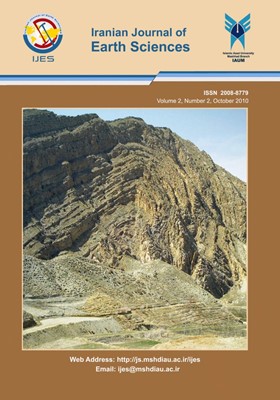Application of glauconite and fossil palynomorphs in reconstructing the Liassic paleogeography just before the opening of the Gulf of Mexico
Subject Areas : Mineralogy
1 - Geology, Unidad de Ciencias de la Tierra-ESIA.IPN,
Calzada Ticomán # 600. Del. Gustavo A. Madero. Col. San José Ticomán, México, D.F. 07330 Mexico
Keywords:
Abstract :
Red beds, conglomerates and salt were considered azoic and problematic rocks, but Paleopalynology and Inorganic Geochemistry proved to be useful for placing them in time and space. In the early last century, in Mexican NE region, only three Mesozoic red bed units were differentiated, dated as Late Triassic to Late Jurassic. It was important tratigraphically to place them properly as they were considered to be the basement of the marine petroliferous sequence in some Mexican Gulf of Mexico sub-basins. Palynostratigraphic studies since 1969, and X- ray analyses since 1989 allowed to place, in time and space, the Cahuasas, Huizachal, La Joya, and La Boca red bed units, outcropping at the Huizachal-Peregrina and Huayacocotla anticlinoria and, recently, the Rosario, Conglomerado-Prieto and Cuarcítica-Cualac units at the Tlaxiaco Anticlinorium. For reconstructing the paleogeographic distribution of these red beds, their correlation permitted to place the Liassic units as deposited in a half-graben connected to an Epicontinental Sinemurian Sea. This sea, during the Middle Jurassic, was invaded by the Tethysian waters through the Hispanic Corridor formed across the new Gulf of Mexico, which originated by a hot spot with a triple junction origin.


